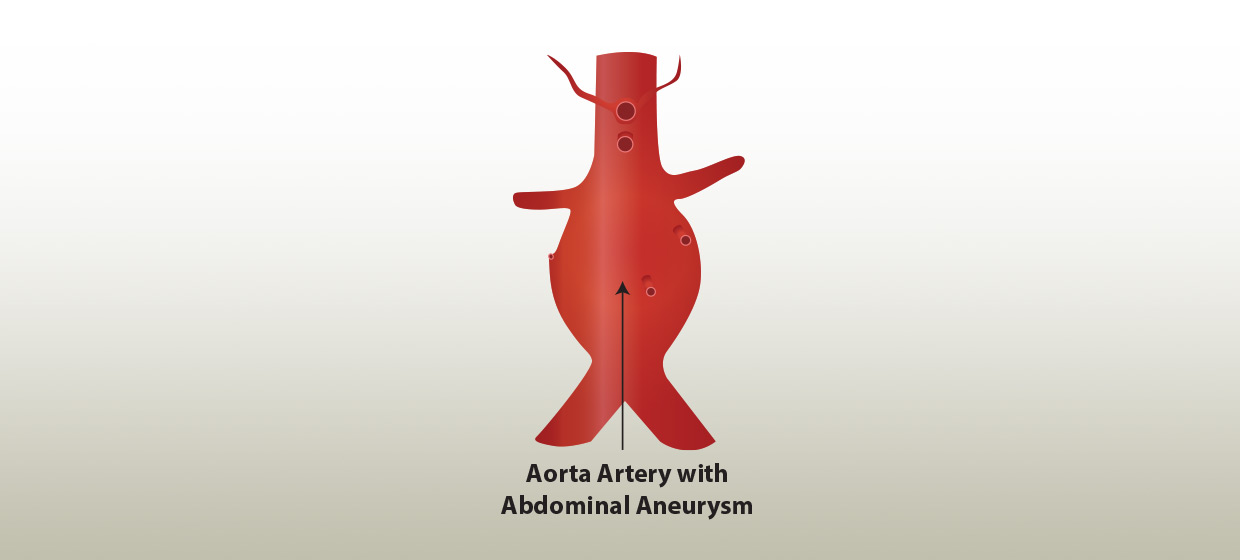The aorta is the main blood vessel that carries blood throughout the body. An abdominal aortic aneurysm (AAA) occurs when an area of the aorta becomes enlarged or balloons out. If the aneurysm becomes large enough, it may rupture.
The exact cause of the condition is unknown. Factors that can increase your risk of developing the problem include: smoking, high blood pressure, male gender, genetic factors.
An abdominal aortic aneurysm occurs most often in males over age 60 who have one or more risk factors. The larger the aneurysm, the more likely it is to break open. This can be life-threatening.

Symptoms
Aneurysms can develop slowly over many years, often with no symptoms. Symptoms may come on quickly if the aneurysm expands rapidly, tears open or leaks blood within the wall of the vessel (aortic dissection).
Symptoms of rupture include:
- Abdominal or Back Pain, this pain may be severe, sudden, persistent, or constant. It may spread to the groin, buttocks, or legs.
- Passing out
- Cool/clammy skin
- Dizziness
- Nausea and vomiting
- Rapid heart rate
- Shock
If you’re experiencing any of these symptoms, please call 9-1-1 and go to the emergency room.